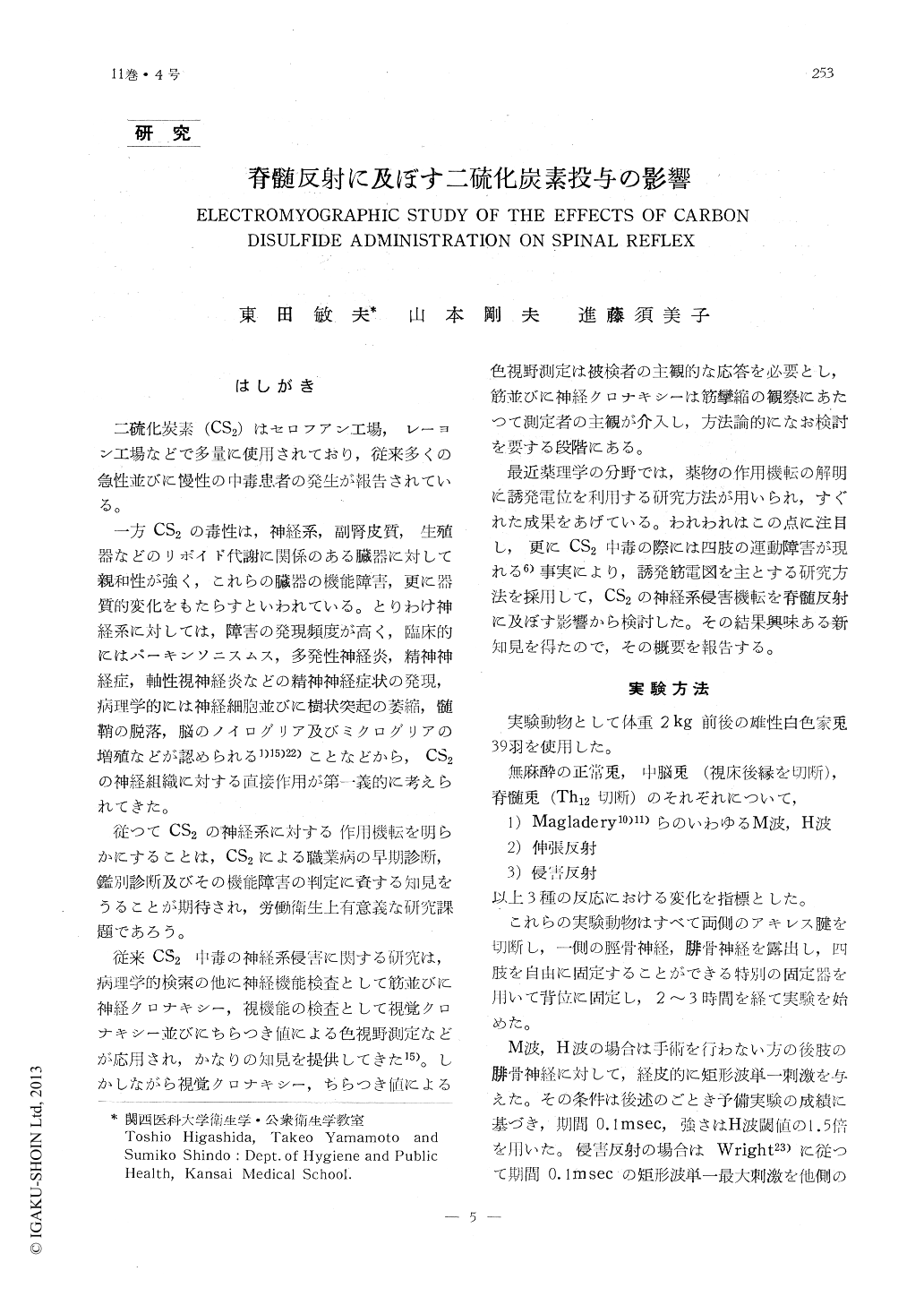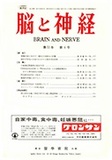Japanese
English
- 有料閲覧
- Abstract 文献概要
- 1ページ目 Look Inside
はしがき
二硫化炭素(CS2)はセロフアン工場,レーヨン工場などで多量に使用されており,従来多くの急性並びに慢性の中毒患者の発生が報告されている。
一方CS2の毒性は,神経系,副腎皮質,生殖器などのリポイド代謝に関係のある臓器に対して親和性が強く,これらの臓器の機能障害,更に器質的変化をもたらすといわれている。とりわけ神経系に対しては,障害の発現頻度が高く,臨床的にはパーキンソニスムス,多発性神経炎,精神神経症,軸性視神経炎などの精神神経症状の発現,病理学的には神経細胞並びに樹状突起の萎縮,髄鞘の脱落,脳のノイログリア及びミクログリアの増殖などが認められる1)15)22)ことなどから,CS2の神経組織に対する直接作用が第一義的に考えられてきた。
Carbon disulfide (CS2) is known as one of the industrial poisons which have affinity to nervous system. We have as yet very little informations as to the effects of CS2 on spinal reflex.
Studying the effects of an intravenous in-jection of CS2 (0.05-0.2cc/kg) on nociceptive reflex, stretch reflex and Magladery's M and H wave of the rabbit's hindlimb by means of electromyographic method in spinal, midbrain and intact rabbits, the following results were obtained.
1) In spinal rabbits, CS2 administration showed the depressant action on spinal reflex responses, the most potent on polysynaptic nociceptive, then on disynaptic group Ib ori-ginated from the Golgi tendon organs, the least potent on monosynaptic group Ia origi-nated from the annulospiral endings in the muscle spindles. So that, in spinal level, the neural circuits containing internuncial cells are more vuluerable to the effects of this chemical compound.

Copyright © 1959, Igaku-Shoin Ltd. All rights reserved.


